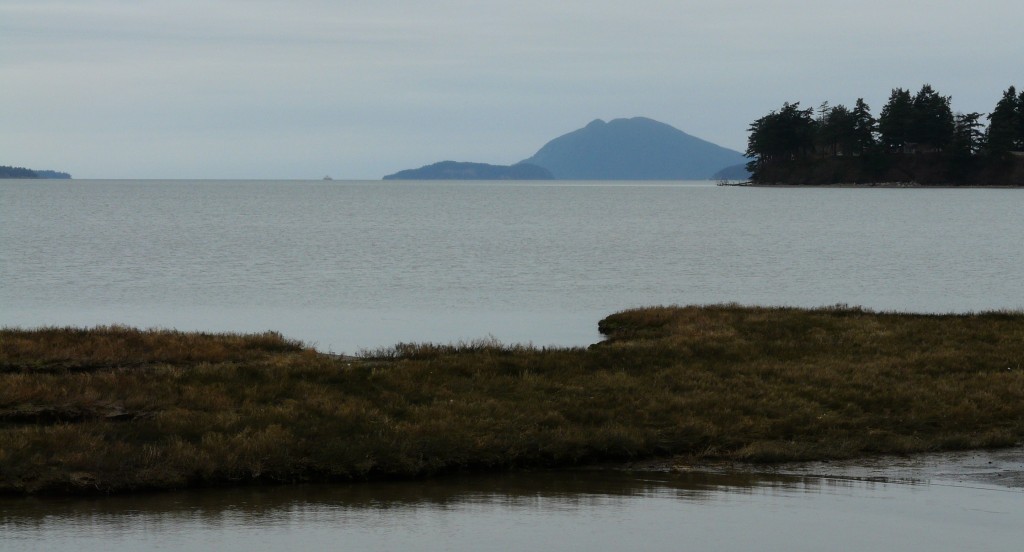The Samish Flats in Skagit County are one of Northwest Washington’s premiere destinations for seeing birds in winter and early spring. Thousands of snow geese, mallards, pintails, green-winged teal, American wigeons, and both tundra and trumpeter swans spend the winter in the wetlands and fallow farmlands of this area, in some cases feeding on leftover agricultural refuse from the harvest season. Countless shorebirds live in the deltas where the Skagit and Samish Rivers feed into Padilla and Samish Bays, respectively. And the profusion of waterfowl and shorebirds–as well as the many rodents hiding in the grass–draw large numbers of birds of prey, including bald eagles, red-tailed and rough-legged hawks, northern harriers, and short-eared owls (among many other species).

This past weekend, I made my annual trip down to Samish Flats to see what birds I could find. It was a windy, chilly day, but many species were still out in force. I first stopped at the East 90 Skagit Wildlife Area near the bank of the Samish River, where open fields and wetlands provide ideal hunting grounds for harriers and owls. Sure enough, I spotted multiple northern harriers as well as bald eagles, great blue herons, and a variety of songbirds. Among the latter were a group of western meadowlarks, birds more commonly associated with the prairie country of Washington’s East Side. A swan flew over, close enough for me to be struck yet again by the really impressive size of these massive birds–but it passed too quickly for me to tell if it was a tundra or trumpeter.
I next continued a short ways down Bayview Edison and Samish Island roads to the Samish Unit West 90 wildlife area, another prime viewing spot. There, I spotted more eagles, as well as pintails, mallards, green-winged teal, and northern shovelers. A huge flock of snow geese–estimated upwards of 450 by my quick count–flew overhead, their beautiful white bodies gleaming in the sun that peaked through the clouds.

My last stop, for this trip, was the Padilla Bay Shore Trail, an excellent place to view birds in all three major environment types: marine, freshwater, and terrestrial. On the salt water of the bay, bufflehead and common goldeneye ducks sat on the waves and dove periodically to chase fish. In the hedges along the trail, chestnut-backed and black-capped chickadees flitted from twig to twig while three types of sparrow (song, savannah, and golden-crowned) foraged for insects on the ground. However, the greatest numbers of birds were to be found along the freshwater or brackish marshlands and sloughs around which the trail skirts. In these areas I counted over 200 mallards, almost 150 each of pintails and wigeons, and around 60 green-winged teal. There was also a pair of hooded mergansers, small but strikingly beautiful diving ducks who frequent lakes and wetlands. A group of killdeer calling off to the side of the trail added to the mix.
I uploaded complete lists of my bird sightings on eBird, a community science platform where birders anywhere in the world can submit their observations and contribute to research efforts that inform conservation. I highly recommend this sight if you’re confident in your birding skills and want to be part of a global effort to track avian populations.
I’ll certainly be returning to Samish Flats, as I have most every year that I’ve lived in Northwest Washington. It’s a remarkable area where it is possible to see wild birds in truly rich abundance, giving one the sense–hopefully not illusory–that there is still time for focused conservation efforts to ensure a future for great flocks of waterfowl and the wealth of predators who follow them on their annual migrations. The annual movement of waterfowl and songbirds up and down the West Coast is a truly Serengeti-like phenomenon, as the birds are trailed by a diversity of hawks, eagles, and falcons. If you enjoy birds and are in Northwest Washington in the wintertime, Samish Flats is an ideal place to visit.



Leave a comment